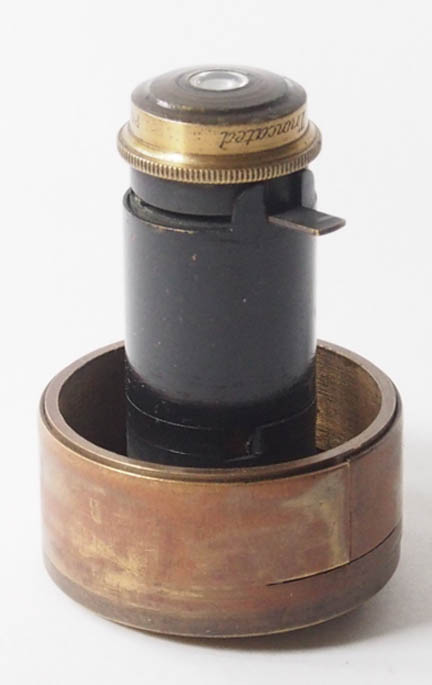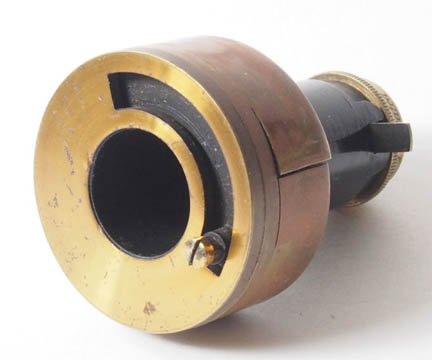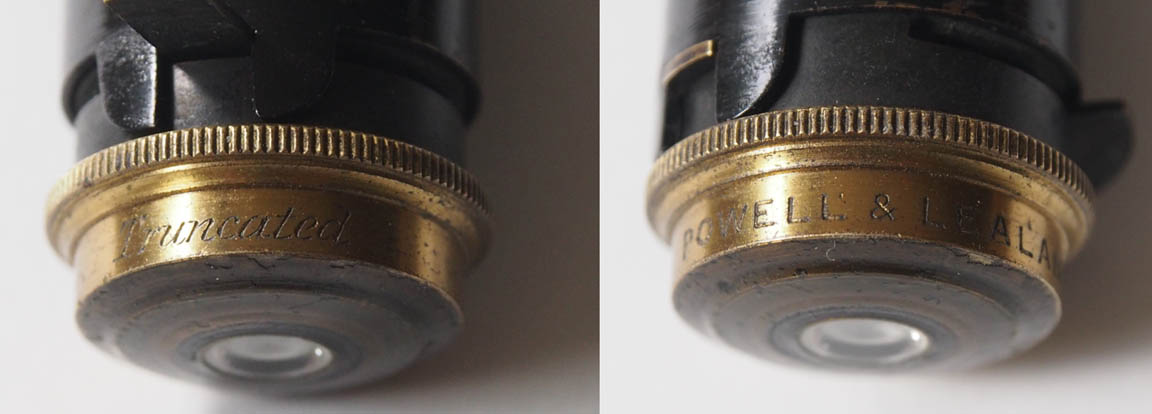NON-ACHROMATIC OIL IMMERSION CONDENSER
MAKER: POWELL & LEALAND
With the development of their first oil immersion objectives, Powell & Lealand’s dry achromatic condenser, with a maximum N.A. of 0.99 no longer provided a sufficiently large cone of light. To take full advantage of the higher resolving power, they first produced a chromatic (i.e. not achromatic and on the principle of a small Abbe) oil immersion condenser in 1880, which was principally designed to be used for providing oblique illumination. This had a total aperture (N.A.) of 1.30.
Its operation is quite ingenious, and consists of a rotating sleeve , with at its top end both a fixed- and a moving diaphragm, the combination of which results in 4 different configurations: one central aperture for focusing/centring purposes, two oblique illumination pencils at 0 deg. And 90 deg. angles respectively, and a fourth combining the latter two, i.e. at right angles of each other. The optical element has a focal length of 1/5 inch, and in this particular example is ‘truncated’, i.e. all optical elements are combined in a single brass cell, which screws into the top of the sleeve. In the original form rotation of the sleeve to select the different apertures was achieved by operating a lever attached to its lower end. In this example this is achieved by moving a screw protruding from the inferior surface of the condenser below the substage, which runs in a semi-circular groove.


